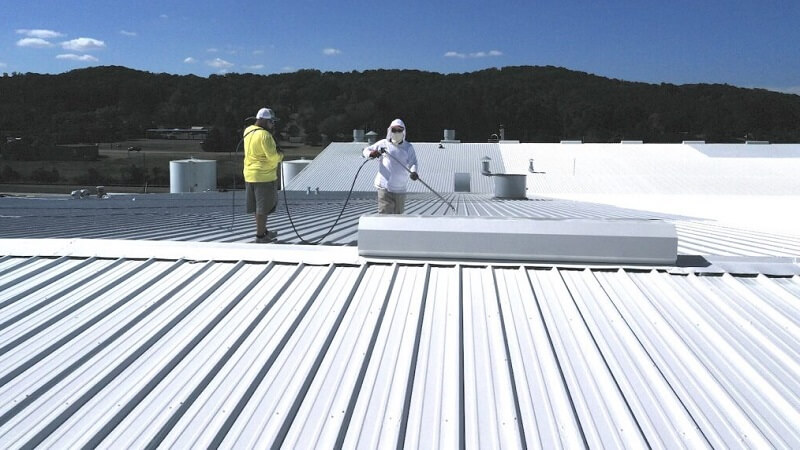Cool roofs are specifically designed to reflect more sunlight and absorb less heat compared to traditional roofing materials. This reflective property helps lower indoor temperatures, reducing the need for air conditioning and ultimately cutting down on energy bills. By using materials like reflective shingles, coatings, or metal roofing, cool roofs can significantly improve energy efficiency, especially during hot summer months. Proper installation by experienced professionals ensures optimal performance, durability, and maximum savings over time.
Table of Contents
- What Are Cool Roofs and How Do They Work?
- The Step-by-Step Process of Installing a Cool Roof
- Benefits of Cool Roofs for Homeowners
- Conclusion: Making the Switch to a Cool Roof
Imagine stepping into your home on a hot summer day and feeling a refreshing coolness instead of stifling heat. With rising energy costs and increasing environmental concerns, many homeowners are turning to innovative solutions like cool roofs to make their homes more efficient and comfortable.
But what exactly are cool roofs, and how do they work? Unlike traditional roofing materials that absorb heat, cool roofs are designed to reflect sunlight and emit heat more effectively, keeping your home cooler and reducing the need for air conditioning. This not only lowers energy bills but also contributes to a more sustainable future. To ensure optimal results, partnering with experienced professionals like H&J Roofing company can make all the difference.
In this guide, we’ll explore how cool roofs work, their benefits, and answer common questions to help you decide if this energy-efficient solution is right for your home.
What Are Cool Roofs and How Do They Work?
Cool roofs are an innovative solution to combat rising indoor temperatures and energy costs. Understanding how they work and the science behind their efficiency can help you make an informed decision about whether they’re right for your home.
Understanding the Science Behind Cool Roofs
The effectiveness of cool roofs lies in two key properties: solar reflectance and thermal emittance . Solar reflectance refers to the roof’s ability to reflect sunlight instead of absorbing it, while thermal emittance measures how well the roof releases absorbed heat. Together, these properties help reduce the amount of heat transferred into your home, keeping indoor spaces cooler and more comfortable.
For example, traditional dark-colored roofs can reach temperatures of up to 150°F (66°C) on a sunny day, while cool roofs can stay significantly cooler—often by 50°F (10°C) or more. This temperature difference translates into lower cooling demands and reduced strain on your air conditioning system.
Types of Cool Roof Materials
Cool roofs can be constructed using a variety of materials, each offering unique benefits:
- Reflective Shingles: These are coated with reflective granules that bounce back sunlight, making them a popular choice for residential homes.
- Metal Roofing: Naturally reflective and durable, metal roofs are an excellent option for both cool roofing and long-term performance.
- Coatings: Reflective coatings can be applied to existing roofs, transforming them into cool roofs without the need for a full replacement. These coatings are often white or light-colored and provide an additional layer of protection against UV rays.
Choosing the right material depends on factors like climate, budget, and the current condition of your roof.
Ideal Candidates for Cool Roofs
Cool roofs are particularly beneficial for homes in regions with hot climates, such as Calgary’s sunny summers. However, they can also be advantageous in cooler climates by reducing heat absorption during warmer months and minimizing the urban heat island effect.
Additionally, homes with poor insulation or older roofing systems can benefit greatly from the added efficiency of cool roofs. By reflecting sunlight and emitting heat, these roofs create a more balanced indoor environment year-round.
The Step-by-Step Process of Installing a Cool Roof
Installing a cool roof involves careful planning and execution to ensure optimal performance and durability. While the exact process may vary depending on the materials used and the condition of your existing roof, here’s a general overview of the steps involved.
Choosing the Right Materials
The first step in installing a cool roof is selecting the right materials for your needs. Factors to consider include:
- Climate: Light-colored coatings or reflective shingles are ideal for hot climates, while metal roofs may suit colder regions.
- Budget: Reflective coatings are often more affordable than replacing the entire roof, but long-term durability should also be considered.
- Aesthetic Preferences: Modern cool roofing materials come in a variety of colors and styles, allowing you to maintain curb appeal while improving efficiency.
Consulting with roofing professionals can help you evaluate options and choose materials that align with your goals.
Preparing Your Roof for Installation
Before installation, the existing roof must be thoroughly inspected and prepped. This step is crucial to ensure proper adhesion and longevity of the cool roof system.
- Inspection: A professional roofer will assess the condition of your current roof, identifying any damage, leaks, or weak spots that need repair.
- Cleaning: The roof surface is cleaned to remove dirt, debris, and loose materials that could interfere with the installation.
- Repairs: Any damaged areas, such as cracked shingles or worn flashing, are repaired to create a stable base for the new materials.
Proper preparation ensures the cool roof performs effectively and lasts for years.
Applying Reflective Coatings or Shingles
Once the roof is prepped, the chosen materials are applied. Here’s how this step typically unfolds:
- Coatings: For reflective coatings, a specialized applicator is used to spread an even layer across the roof surface. These coatings dry quickly and form a seamless, protective barrier.
- Shingles or Panels: If installing reflective shingles or metal panels, the materials are carefully laid out and secured in place. Precision is key to ensuring proper alignment and coverage.
Professional installers use advanced techniques to work around vents, chimneys, and other roof features, ensuring a flawless finish.
Benefits of Cool Roofs for Homeowners
Cool roofs offer a range of benefits that go beyond just lowering energy bills. From enhancing indoor comfort to contributing to a healthier planet, these innovative roofing solutions are a smart investment for homeowners.
Energy Efficiency and Cost Savings
One of the most significant advantages of cool roofs is their ability to reduce energy consumption. By reflecting sunlight and emitting heat, cool roofs help maintain lower indoor temperatures, especially during hot summer months. This reduces the need for air conditioning, leading to noticeable savings on energy bills.
Homeowners in warmer climates can expect energy savings of 10-30% on cooling costs, depending on factors like roof size, insulation, and local weather conditions. Over time, these savings offset the initial installation costs, making cool roofs a cost-effective choice in the long run.
Enhanced Comfort in Hot Climates
Cool roofs create a more comfortable living environment by minimizing heat transfer into your home. Without the added heat absorption from traditional roofs, indoor spaces remain cooler and more pleasant, even on the hottest days.
This improved comfort is particularly beneficial for homes with inadequate insulation or older HVAC systems that struggle to keep up with cooling demands. With a cool roof, you’ll enjoy consistent indoor temperatures without overworking your air conditioner.
Environmental Impact and Sustainability
Cool roofs aren’t just good for your wallet—they’re also good for the planet. By reducing the urban heat island effect—a phenomenon where cities become significantly warmer due to heat-absorbing surfaces—cool roofs help mitigate rising temperatures in urban areas.
Additionally, lower energy usage means fewer greenhouse gas emissions from power plants, contributing to cleaner air and a healthier environment. Choosing a cool roof aligns with sustainable practices, making it an eco-friendly option for environmentally conscious homeowners.
Conclusion: Making the Switch to a Cool Roof
Switching to a cool roof is a smart and sustainable way to lower energy bills, improve comfort, and reduce your environmental impact. By reflecting sunlight and emitting heat more effectively, cool roofs transform your home into an energy-efficient haven, especially during hot summer months.

